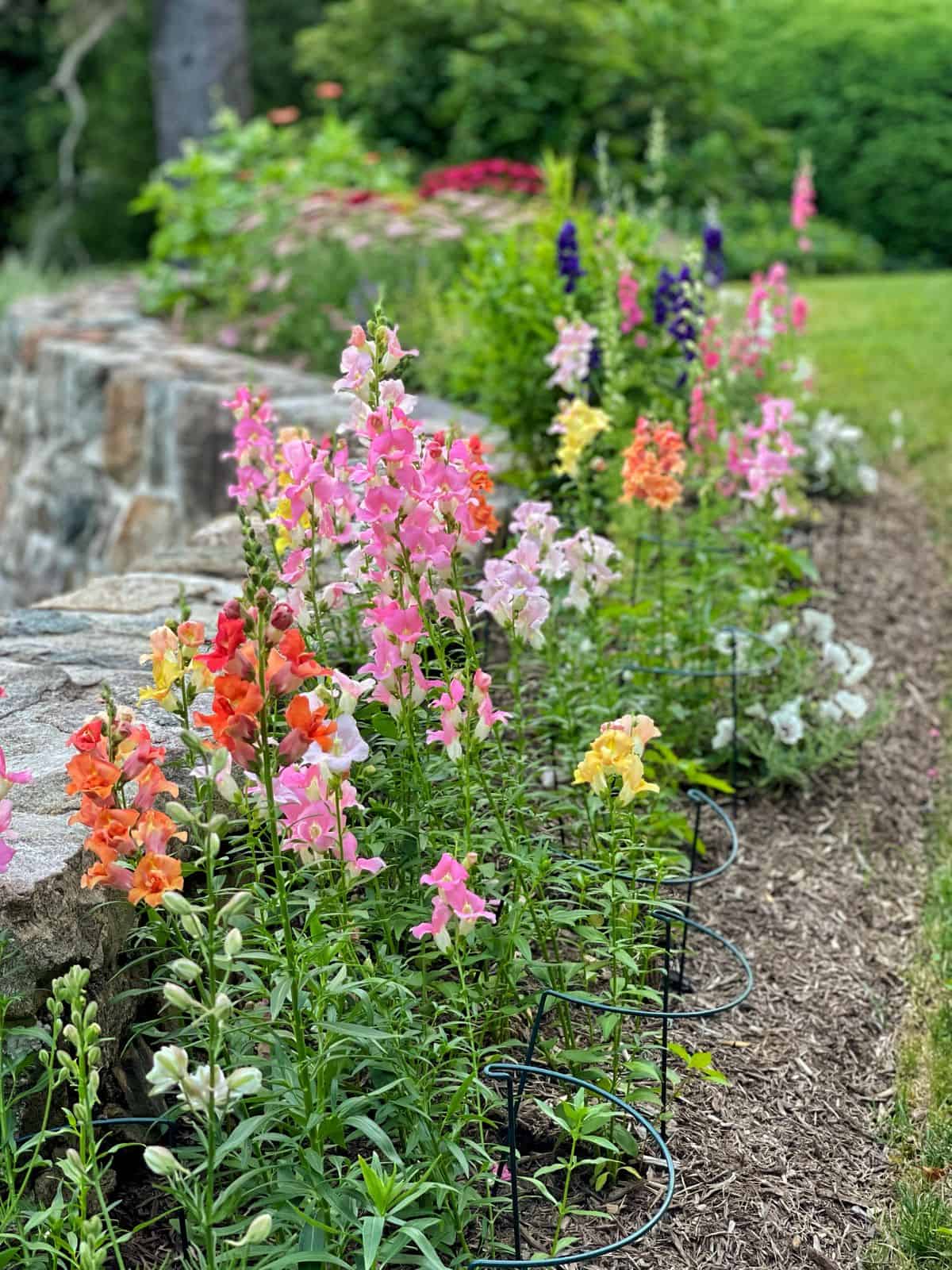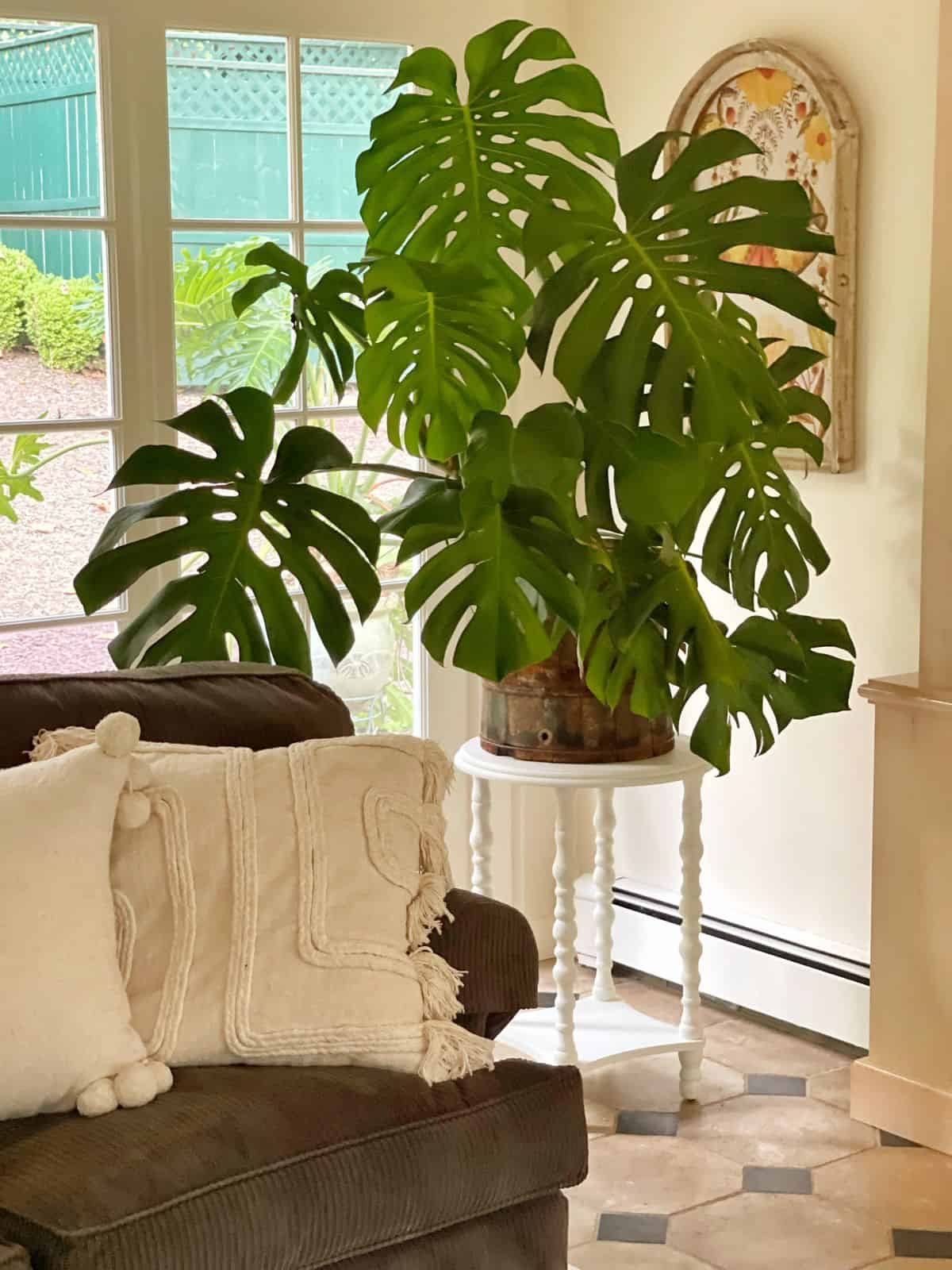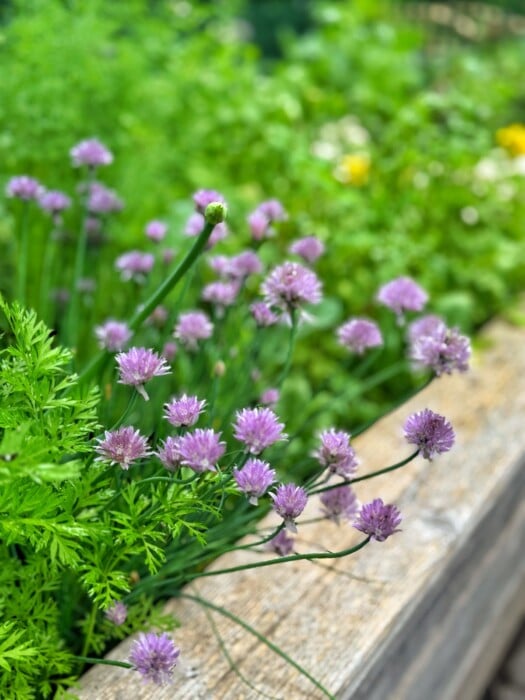Transform your gardening experience! Get 11 simple gardening tips for beginners that will save you time, money, and frustration. Start your dream garden today.
If you’re a gardening newbie, starting small with easy-care plants is the key to success. Nobody wants a garden full of failures!
But even experienced gardeners can always pick up a new trick or two. Whether you’re dreaming of a vibrant flower bed or a bountiful veggie patch, these tips will help you create a thriving garden without the overwhelm.
Discover simple strategies to save money, time, and the frustration that comes with caring for fussy plants.
(Posts on stacyling.com may contain affiliate links. Click HERE for full disclosure.)

Easy Gardening Tips for Beginners: Save Time and Money with These 11 Hacks
Gardening is one of the most rewarding hobbies around. From starting plants from seed to growing beautiful flowers and harvesting homegrown vegetables, you can’t beat the thrill and sense of accomplishment you get from growing a garden.
It’s also an excellent way to spend time outdoors, connect with nature, reduce stress, and boost the mood. Plus, our homes and landscapes just look prettier.
There are ways to garden with ease that you may or may not know. Here are some of my best beginner gardening tips I hope you find helpful on your plant parent journey.

Finding Easy Care Plants
Start your gardening journey on the right foot by choosing plants that are known for being low-maintenance. But how do you know what to look for?
Always Read the Plant Tags
This may seem pretty obvious gardening tip for a beginner, but so many home gardeners don’t do it – even the more experienced ones. It’s really important to read those plant tags and care for the plant as the grower recommends.
Always read the plant tags carefully for information about light needs, watering requirements, and mature size. The growers know their plants better than we do. If a plant tag says, it requires full sun and well draining soil, avoid planting it in a shady location that doesn’t drain well and pools with water.
So don’t just gloss over the plant tag to get the gist. Read it thoroughly and do what the grower recommends. You’ll save yourself a lot of time, money, and heartache later when the plants don’t thrive or survive.

Start Small with Easy-Care Low Maintenance Plants
If you are new to gardening or have a busy lifestyle, start small and achieve success before you go full-on plant parent. It’s better to learn how to garden with something small that is easy to manage than with something large where you have to put more time and effort in.
Whether you start with a small container garden or small 4’x8′ garden, begin where the size is manageable for you to realistically care for.
Before purchasing any plants, identify what plants are easy care and low maintenance for your lifestyle. Because it’s much easier to grow plants and flowers that require less mothering than caring for fussy ones. Look for plants labeled as “drought-tolerant”, “pest-resistant”, or “beginner-friendly”.
Plus, easy care, low maintenance plants are more resilient and can bounce back if something doesn’t go its way. Native plants, succulents, snake plants, pothos, and ZZ plants are a few great options for those new to gardening.

Choosing the Right Location
Whether you garden inside or out, it’s so important to understand the kind of light conditions you have. Because plants require certain light conditions to grow, thrive, and bloom. When we don’t plant the right plants in the proper light conditions, they don’t do well and oftentimes, die.
Which is not only a waste of time, but also a huge waste of money!
Learn Your Light Conditions
Look at your home and locate north, south, east, and west. Before choosing plants, we need to know what light conditions we have. And they may be different in various spots of our property.
In the Garden
Depending on where the garden is sited, check to see how much sunlight it gets: full sun (6-8 hours), part sun (4-6 hours), and shade (less than 4 hours). Chart it one sunny day after the leaves leaf out in spring so you know what your landscape has to offer and purchase plants accordingly.

Houseplants
In general, houseplants fall under one of three light condition categories: high, medium and low. Once you have a general understanding of what each means and how they translate in your home, you will be on the road to success.
3 Types of Light Conditions
- High Light: southern or southwestern exposure window.
- Medium Light: east or west window with direct exposure or bright indirect light from filtered spots near a southern exposure window.
- Low Light: north windows or indirect light that is several feet from east, west or south facing windows.
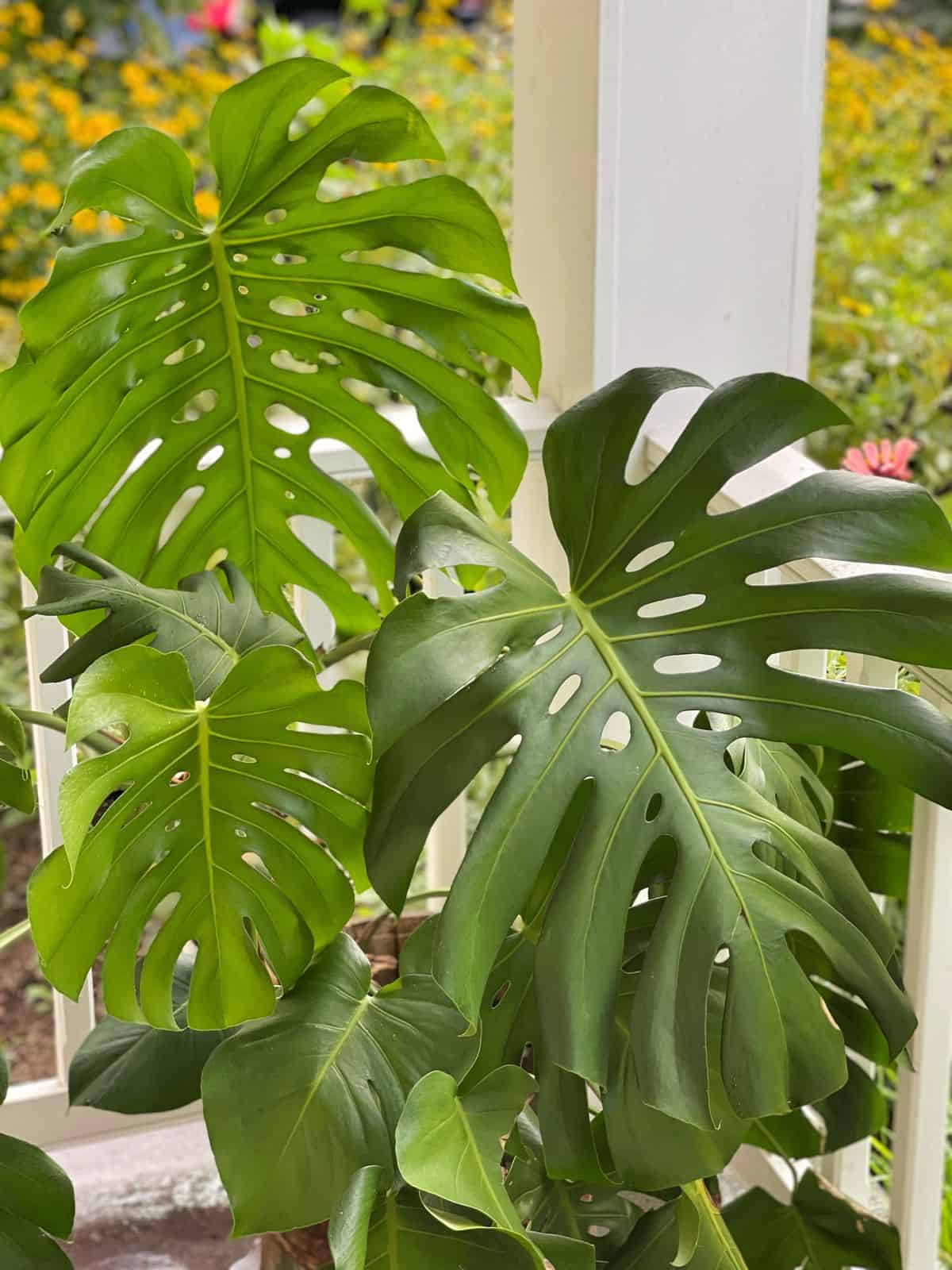
Here’s a really good example of what not to do. Fiddle leaf figs are all the rage today in home decor. But you know what? Those plants are not easy to grow! In fact, they are pretty fussy and need everything to be just right.
While you can be successful with them, there are MUCH EASIER plants to grow like the monstera plant or pothos that are harder to kill. If you are just starting out, start with those instead of what’s trending on Instagram.
With the internet today, it is so easy to find lists of easy care, low maintenance plants of flowers, herbs, vegetables, and houseplants. So do yourself a favor and know before you buy.
Know Your Hardiness Zone with First and Last Frost Dates
If you garden outdoors, it is so important to know when the first and last frost date is for your hardiness zone so you learn what can survive the winter in your locality. Those dates tell you when it is safe to plant tender perennials, annuals, and houseplants outside without threat of frost. If you don’t know your hardiness zone, click here.

The Foundation of a Healthy Garden
Your soil quality matters. To most newbie gardeners, soil quality isn’t high on the priority list, but trust me when I tell you that it should be. Good quality soil feeds plant roots and nourishes them so plants can grow healthy and strong.
Much like people, if plants are malnourished they will become sick and die. So what do you do?
If you are gardening in the ground, test the soil to see if you have good growing conditions for plants. You can buy soil test kits like these or work with your local cooperative extension. When you have the results, tweak the soil with what’s lacking and bring it into balance.
Amend the soil yearly with compost and leaf mold to improve overall soil quality, feed plants, and improve drainage. It is also a great idea to mulch the beds to help suppress weeds, retain moisture and protect plant roots from harsh weather conditions.
It sounds like a lot I know, but focusing on the soil will greatly improve your gardening success. This is one of the best gardening tips for beginners you need to know! Because starting with good quality soil is everything.
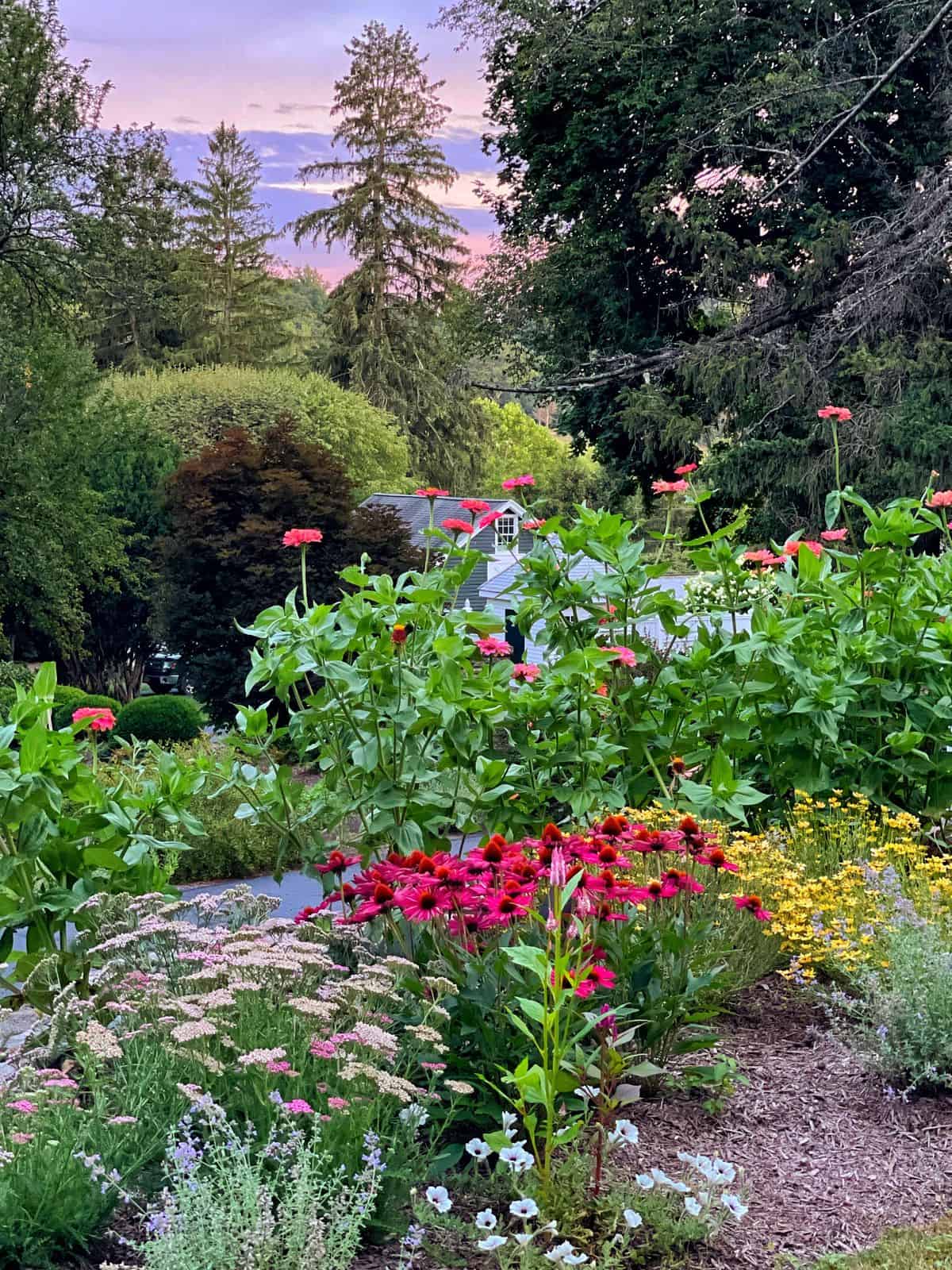
Ongoing Care Tips
Now that your garden is off to a great start, keeping it thriving is easy! Here are a few essential tips for keeping your plants healthy and happy.
Fertilizing Some Plants With Slow-Release Fertilizer
I say feed some plants because not ALL plants need to be fertilized. I rarely fertilize perennials, shrubs, and trees. Focus on good soil quality with compost and leaf mold, and that is enough.
However, some plants need more than that. Annuals, houseplants, and container gardens are good examples of plants that need to be fertilized.
I used to use a fertilizer that needed to be applied weekly, but that gets onerous on your time. It is MUCH easier to feed plants with a set and forget slow-release fertilizer one where you only need to reapply a few times as opposed to every week.

Watering with Drip Irrigation in Container Gardens
Watering, particularly in the heat of summer, can be ALOT on your time and energy. But you’d be suprised to know how easy it is to install drip irrigation yourself from kits you can buy online.
The drips are easy to run, easy to use, and keep plants hydrated for you, particularly if you keep them on a timer. I’ve purchased these drip irrigation systems a few times and love them.
Common Pests and Diseases
Keep an eye out for pesky intruders and signs of plant trouble. Aphids, spider mites, and powdery mildew are just a few common problems gardeners face. Early identification is key, so inspect your plants regularly. Knowing what pests and diseases are common in your area will help you spot and treat problems quickly.
Stock Up on Kitchen Gloves
What? Kitchen Gloves? Yes! Kitchen gloves are GREAT for pulling poison ivy. They are long enough to cover my arms and I don’t feel bad tossing them after the deed is done because they are SO inexpensive.
Why risk contaminating yourself again or have to wash and rewash garden gloves to ensure there’s no poison ivy oils left behind? I keep them in my garage and grab them whenever I find poison ivy in the gardens.

Container Gardening Tips
If you’re short on space or want to add some portable beauty to your patio, container gardening is a fantastic option. Here are a few tips to get you started.
Save Money and Lighten Container Gardens With Plastic Nursery Pots
One of my favorite gardening activities is to design and plant container gardens. I typically work with larger containers because they hold more moisture, dry out less easily, and provide more visual impact than their smaller counterparts.
For those of you that have worked with larger containers before, even the lightest of pots can get pretty heavy once you add soil and plants. To keep containers light enough to move around, I reuse those plastic nursery garden pots and place a few at the bottom of the container before adding soil.
When doing this, just stuff them face down in a small pile and try filling containers about 1/4-1/3 of the way depending on the size of the pot and the plants you intend to grow. You can’t do this smaller containers but oversized large ones work well with this tip.
If you think you’ll be planting a shrub or something that will require a deeper root system, pile them about 1/8 of the way from the bottom. Once those nursery garden pots are in place, add soil and plant as usual. This method not only lightens the container, but it also helps save money on potting soil!
Use Landscape Fabric in Containers
A little trick I learned from the Queen of Gardening, Martha Stewart herself, is to line the inside of containers with a little landscape fabric. The landscape fabric helps keep potting mix in the containers so less washes out when you water.

Budget-Friendly Design
Creating a beautiful garden doesn’t have to break the bank! With some smart planning and creativity, you can achieve a stunning space without spending a fortune. Here’s how:
Flower Garden Design Tips So You Get More Bank for Your Buck
When planning your flower garden, consider whether you want to plant perennials vs annuals or both. Perennials return yearly but require a little more work cleaning them up every season. While annuals enjoy one life cycle per season.
Purchasing annuals every season can get a little pricey. So one way to cut down that cost is to plan ahead to the next season. When you are shopping for spring annuals like marigolds and petunias, think about what they’ll look like in fall.
Choose colors that will work in either spring or fall design so you spend less planting fall annuals later to get that autumn color palette.

What’s Your Best Gardening Tip?
What is your favorite gardening tip that you love and use all the time? I would love to know more in the comments below. While some of these gardening tips are somewhat obvious, were there a few you did not know?
Thank you for following along. Happy planting – enjoy your day! xo






